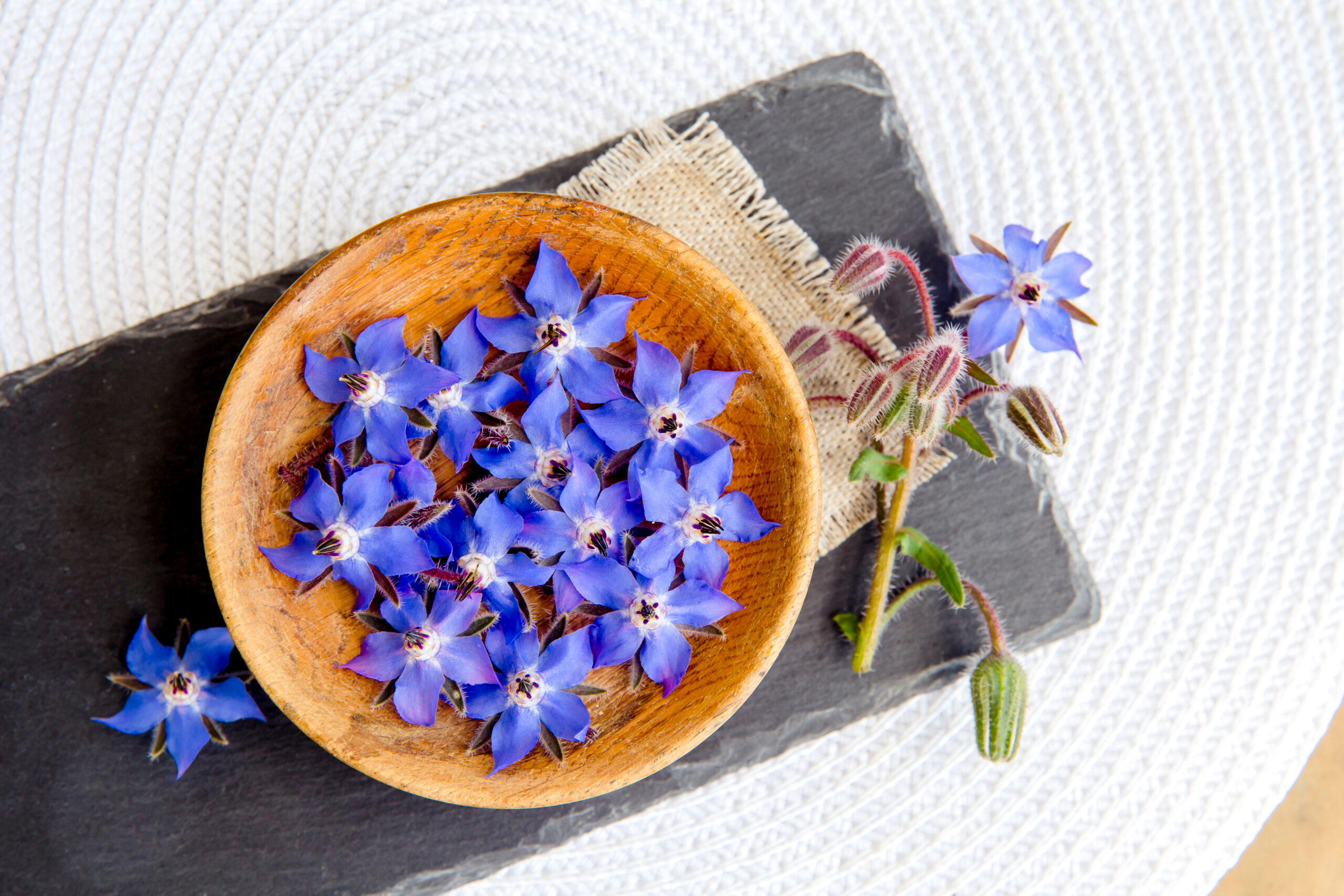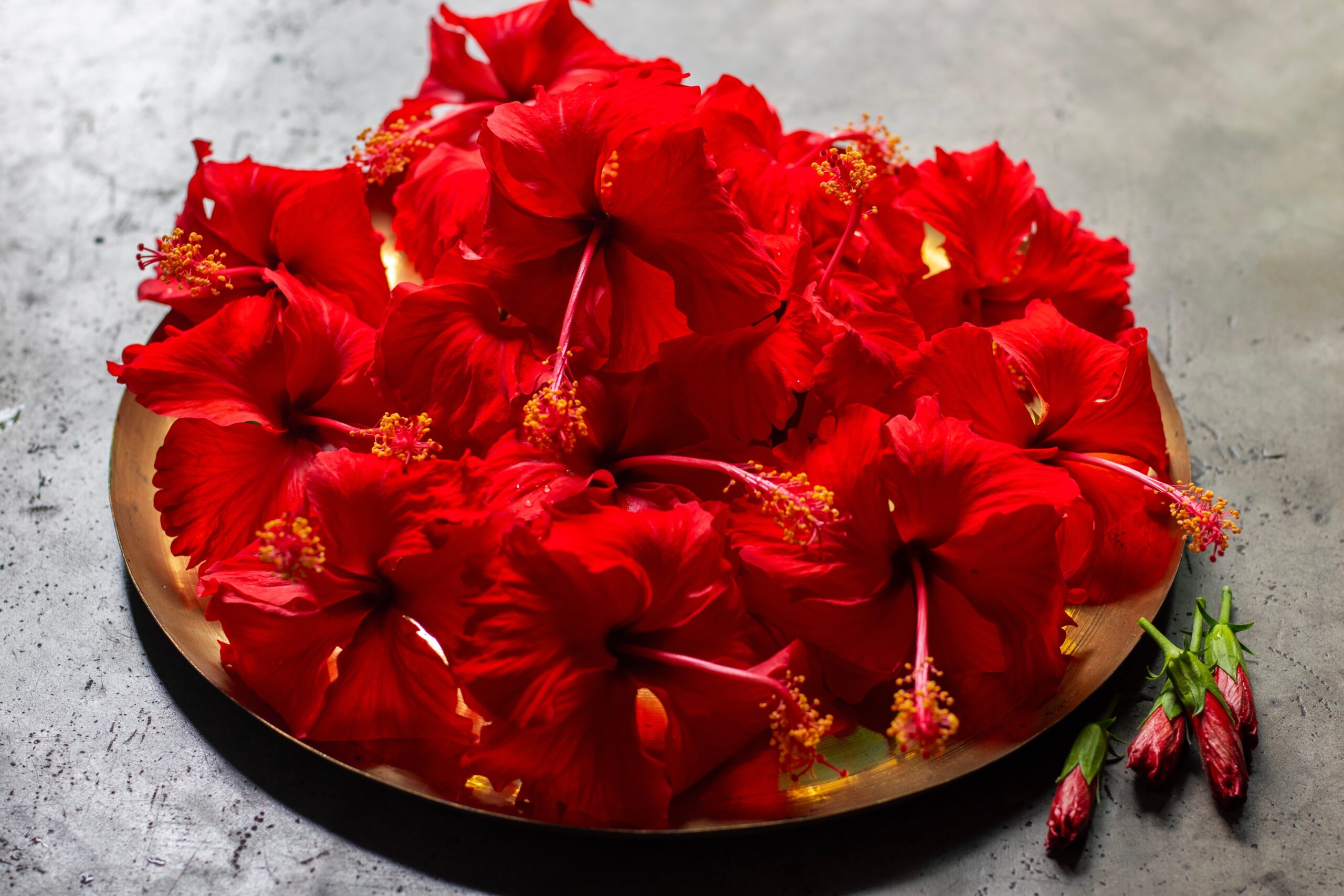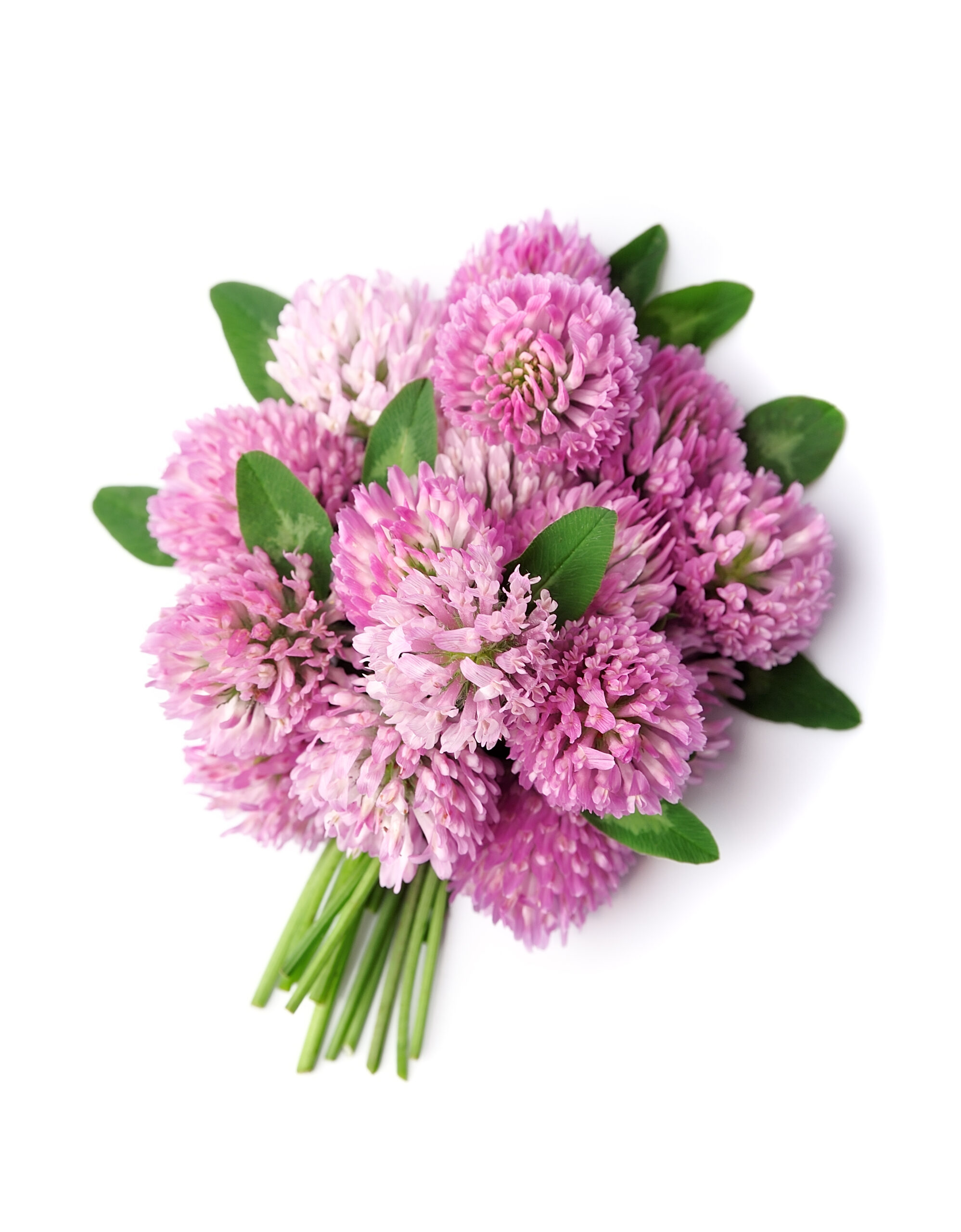Flowers aren’t just for brightening up your garden or Instagram feed—they can also add a pop of flavor and nutrition to your plate. Edible flowers are like nature’s confetti, bringing beauty, taste, and a little surprise to your meals. From salads to desserts, these blooms don’t just look good; they can elevate your dishes with subtle sweetness, peppery notes, or even a hint of citrus.
Contents
- 1 Nasturtiums
- 2 Lavender
- 3 Borage
- 4 Marigolds
- 5 Hibiscus
- 6 Rose Petals
- 7 Pansies
- 8 Chamomile
- 9 Violets
- 10 Squash Blossoms
- 11 Dandelions
- 12 Elderflowers
- 13 Sunflower Petals
- 14 Chrysanthemums
- 15 Begonias
- 16 Honeysuckle
- 17 Clover
- 18 More From RetailShout
- 19 18 Best Places to Buy Tasty Food Gifts Online
- 20 15 Old-School Casseroles That Still Hit the Spot
Nasturtiums

Nasturtiums are known for their vibrant colors and slightly peppery flavor, similar to arugula. The entire plant, including the flowers and leaves, is edible, and they are often used in salads, sandwiches, and garnishes. Rich in vitamin C, these flowers offer an immune boost and contain antioxidants that fight free radicals. You can also use them to make colorful infused vinegars or oils. Their bright blooms are perfect for adding a splash of color to savory or sweet dishes alike.
Lavender

Lavender offers a sweet, slightly floral taste that pairs well with both sweet and savory recipes. Its calming scent is often used in desserts, teas, and baked goods like shortbread or scones. Lavender is also high in vitamins and minerals, particularly vitamin A and calcium, promoting healthy skin and bones. When cooking with lavender, be sure to use it sparingly as its flavor can easily overpower a dish. Try incorporating it into lemonades, syrups, or even savory meat rubs for a unique twist.
Borage

Borage flowers have a mild cucumber-like flavor, making them a refreshing addition to salads, cold soups, and beverages. Rich in gamma-linolenic acid (GLA), an omega-6 fatty acid, borage offers anti-inflammatory benefits and can promote skin health. These star-shaped blue flowers are also a good source of vitamin C and other antioxidants. Borage is commonly used to decorate cakes, ice cubes, or to float on top of cocktails for a touch of elegance. They add a cool, crisp taste that complements summer dishes perfectly.
Marigolds

Also known as calendula, marigolds bring a slightly tangy, peppery flavor to dishes. Their bright orange petals can be sprinkled over salads, soups, or used to garnish rice dishes for a pop of color and flavor. Marigolds are rich in lutein and beta-carotene, both of which are beneficial for eye health. The petals can also be used in herbal teas to boost immunity and fight inflammation. Whether fresh or dried, marigolds add both visual appeal and health benefits to any dish.
Hibiscus

Hibiscus flowers are tart and tangy, with a flavor reminiscent of cranberries, making them perfect for teas, jellies, and sauces. They are packed with antioxidants, particularly anthocyanins, which support heart health and reduce inflammation. Hibiscus is often used in refreshing drinks, like iced teas or cocktails, and can also be infused into syrups and jams. The vibrant red color of hibiscus adds a striking visual element to beverages and desserts. Additionally, studies suggest hibiscus may help lower blood pressure when consumed regularly.
Rose Petals

Rose petals are not only beautiful but also have a sweet, slightly perfumed flavor that works well in desserts and teas. They are rich in vitamins C and A, supporting immune health and skin vitality. You can use rose petals to flavor jams, syrups, or make rosewater to drizzle over cakes or in drinks. They also make elegant garnishes for salads, desserts, and even ice creams. Opt for organic roses to ensure they are pesticide-free and safe for consumption.
Pansies

Pansies are delicate flowers that have a mild, slightly minty flavor, making them a versatile addition to salads, desserts, and beverages. They are a good source of vitamin C, contributing to immune support and skin health. Pansies can also be candied and used as decorations for cakes or pastries. Their wide range of colors, from purple to yellow, adds a cheerful touch to any dish. These flowers are also known for their antioxidant properties, making them as nutritious as they are pretty.
Chamomile

Chamomile is commonly used for its calming properties in teas, but the flowers can also be used in baked goods, salads, or as a garnish for desserts. With a mild, apple-like flavor, chamomile pairs well with honey, lemon, and vanilla in both sweet and savory dishes. Chamomile is packed with antioxidants and has anti-inflammatory properties, making it beneficial for digestion and relaxation. You can even steep chamomile in milk to make a soothing drink before bedtime. Its gentle flavor is perfect for light, refreshing dishes.
Violets

Violets have a sweet, floral taste and are often used in salads, desserts, and to flavor syrups or jams. They are rich in vitamins A and C, making them a nutritious choice for supporting skin health and immune function. Violets can be candied and used to decorate cakes or incorporated into sorbets and creams for a delicate floral flavor. These flowers are also known for their anti-inflammatory and diuretic properties. Their deep purple color adds a striking contrast to any dish, making them as visually appealing as they are tasty.
Squash Blossoms

Squash blossoms are the edible flowers of zucchini and other squash plants, with a mild, slightly sweet flavor. Often stuffed with cheeses or battered and fried, they add a touch of elegance to dishes while also providing a good source of vitamins A and C. Squash blossoms can be used in quesadillas, pasta, or as pizza toppings for a burst of flavor and nutrition. Their delicate texture makes them a great addition to salads and soups as well. Whether raw or cooked, squash blossoms are a versatile and nutritious ingredient.
Dandelions

Though often considered a weed, dandelion flowers are edible and have a sweet, honey-like flavor that works well in salads, teas, and jellies. Dandelions are packed with antioxidants and are known to support liver health and digestion. The bright yellow flowers can also be fried, added to soups, or used in baked goods for a subtle floral note. Dandelions are also a good source of vitamins A and K, contributing to healthy skin and bones. These flowers are a surprising yet nutritious addition to many dishes.
Elderflowers

Elderflowers are known for their fragrant, floral flavor, which is often used in cordials, syrups, and desserts. They are rich in antioxidants and have antiviral properties, making them beneficial for immune support. Elderflowers are often paired with citrus fruits in beverages and desserts, adding a light, floral note. They can also be used to infuse honey or vinegar, offering a delicate sweetness to dressings and sauces. Elderflowers are a great way to add both flavor and health benefits to your summer recipes.
Sunflower Petals

Sunflower petals have a slightly bitter flavor, similar to artichokes, and can be used in salads, stir-fries, or as a garnish for soups. They are high in vitamins E and B, supporting skin health and energy metabolism. Sunflower petals can also be steeped in tea or used to make infused oils for dressings. Their bold yellow color brightens up any dish, while their mild bitterness adds a unique depth of flavor. These flowers offer both visual appeal and nutritional benefits.
Chrysanthemums

Chrysanthemums have a slightly bitter, peppery taste that makes them a great addition to salads, soups, and teas. They are high in antioxidants and vitamins, particularly vitamin C, making them beneficial for overall health and immune support. Chrysanthemum petals can also be steeped to make a refreshing tea, often used in Chinese cuisine for its cooling properties. The petals add a burst of color and flavor to savory dishes like stir-fries or broths. With both medicinal and culinary uses, chrysanthemums are a versatile flower to include in your meals.
Begonias

Begonias have a tangy, citrus-like flavor that works well in salads, desserts, and beverages. They are rich in vitamin C, which supports immune health and collagen production for healthy skin. Begonia flowers can also be used as a garnish for drinks or desserts, adding a bright, zesty flavor. Their crisp texture makes them a refreshing addition to summer salads or fruit-based dishes. Begonias are also known for their detoxifying properties, making them a nutritious and flavorful choice.
Honeysuckle

Honeysuckle flowers have a sweet, honey-like flavor and are often used in syrups, jams, and teas. They are a good source of antioxidants, supporting overall health and protecting the body from oxidative stress. Honeysuckle is also known for its anti-inflammatory properties and is often used in traditional medicine for respiratory health. The flowers can be steeped to make a fragrant tea or added to desserts for a natural sweetness. Be sure to only consume the flowers, as other parts of the plant can be toxic.
Clover

Clover flowers have a sweet, mild flavor that works well in salads, teas, and baked goods. They are high in vitamins and minerals, particularly calcium and magnesium, supporting bone health and muscle function. Clover is also known for its detoxifying properties and is often used in herbal teas to support liver health. The flowers can be used to make syrups or infused into honey for a subtle floral sweetness. Clover is a versatile and nutritious addition to both sweet and savory dishes.
This article originally appeared on RetailShout.
More From RetailShout
15 Foods You Can Save Big On by Making at Home

Eating out can be a fun treat, but it often comes with a hefty price tag. Many popular foods can be made at home for a fraction of the cost, without sacrificing flavor or quality. Read More.
18 Best Places to Buy Tasty Food Gifts Online

Shopping for food gifts can be time-consuming, not to mention the endless choices that make it hard to pick the perfect present. And let’s be real, going to the store can be a hassle, especially when you’re on a tight schedule. Read More.
15 Old-School Casseroles That Still Hit the Spot

There’s something comforting about old-school casseroles that keeps them around through the years. Whether you’re craving a hearty dish or looking for a crowd-pleasing dinner idea, these classic casseroles hit the spot every time. Read More.






